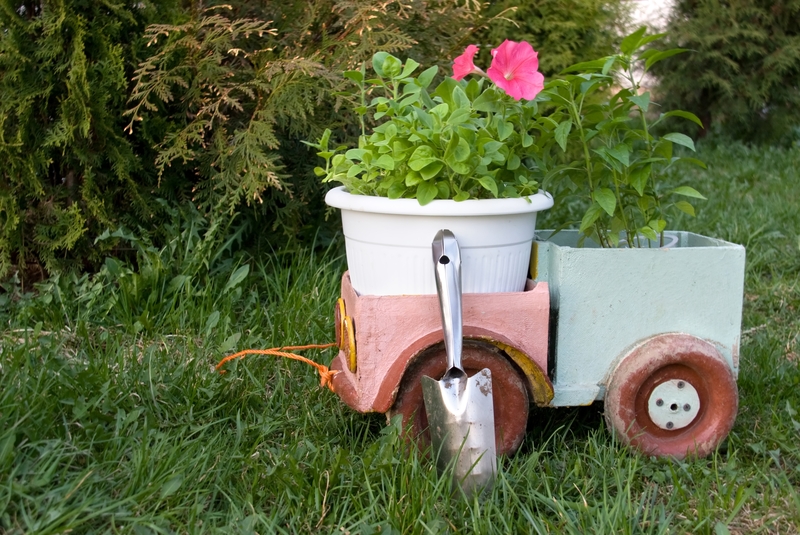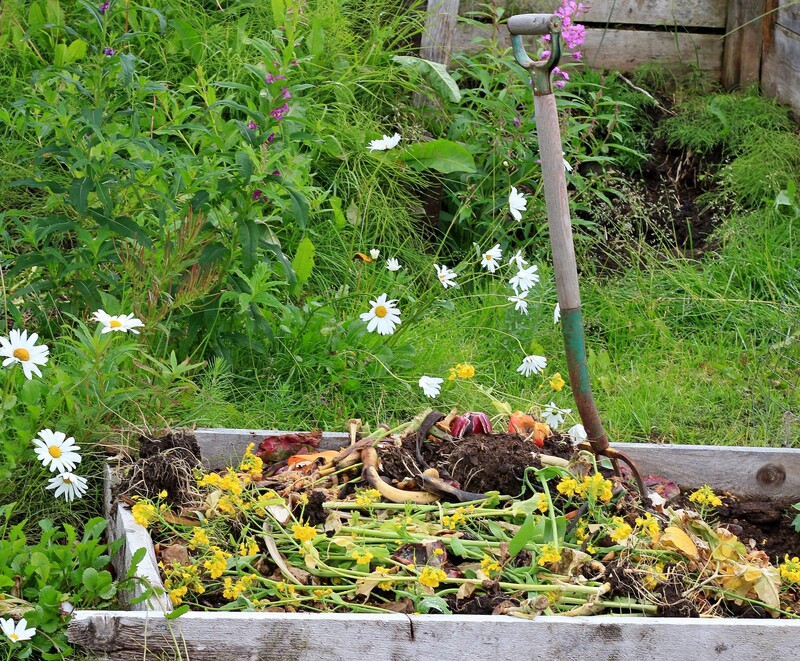Breathing New Life into Trash Through Inventive Upcycling Techniques
Rethinking how we dispose of our everyday waste is more crucial than ever. Instead of letting items pile up in landfills, innovative upcycling solutions present a remarkable opportunity for transforming trash into treasures. From DIY enthusiasts to environmentalists, upcycling is becoming a global movement, fostering creativity, sustainability, and a greener future.
Understanding Upcycling: Transforming Waste into Wonder
Upcycling is the process of creatively reusing and repurposing discarded items, giving them a new, often improved, purpose. Unlike recycling, which typically breaks down materials to raw forms, upcycling leverages the original form to create something valuable, attractive, or functional. This method not only reduces waste but also inspires resourcefulness and a sense of personal achievement.
How Upcycling Differs from Recycling
- Recycling involves breaking down materials (such as plastic, metal, or paper) into their base components and creating new products, which often consumes significant energy.
- Inventive upcycling techniques convert trash directly into new products without breaking them down, making it more eco-friendly and creative.
- Upcycling values the character and history of the original item, often resulting in unique, one-of-a-kind creations.

The Environmental Impact: Why Upcycling Matters
With increasing global waste accumulation and dwindling natural resources, upcycling represents a practical and imaginative solution. By extending the lifecycle of products and materials, innovative upcycling minimizes landfill contributions, reduces the need for raw materials, and decreases the carbon footprint associated with manufacturing and waste disposal.
Key Environmental Benefits
- Reduces Landfill Waste: Diverts items from being disposed of, easing pressure on landfills.
- Conserves Resources: Lowers the demand for virgin materials and the environmental impact of extraction and processing.
- Decreases Greenhouse Gas Emissions: Less energy is used than recycling or creating new products from scratch.
- Promotes Circular Economy: Fosters a culture of reuse and regeneration, supporting sustainable living.
Inventive Upcycling Techniques: Turning Trash into Treasures
Upcycling isn't just about repainting an old chair or turning a glass jar into a vase. Today's creative minds are employing innovative methods and surprising materials to revitalize waste into art, decor, furniture, clothing, and useful everyday objects. Below, explore some of the most ingenious upcycling techniques that are inspiring both amateurs and professionals worldwide.
1. Furniture Revamps from Discarded Pallets and Crates
- Pallet Coffee Tables: Simple shipping pallets can be sanded, painted, and stacked to form bespoke coffee tables, complete with caster wheels for mobility.
- Crate Shelves: Wooden crates easily transform into wall-mounted shelves or storage units with a rustic look.
- Garden Benches: By piecing together pallets, you can build beautiful benches or outdoor seating, often finished with eco-friendly stains or cushions made from recycled textiles.
2. Clothing Upcycling: Fresh Fashion from Old Fabrics
- Patchwork Denim: Old jeans can be cut and stitched into patchwork jackets, tote bags, or quilts, each with its own story and character.
- Shirt-to-Dress Transformations: Creative tailors repurpose men's shirts into trendy dresses or children's clothing, maximizing fabric use.
- Accessory Creation: Scraps of fabric become beautiful scarves, hair ties, hats, or even eco-friendly gift wraps.
Modern upcycled fashion is not only a sustainable style choice but can become a statement piece highlighting the importance of conscious consumption.
3. Upcycled Art and Decor: Exhibiting Creativity with Trash
- Plastic Bottle Installations: Artists are crafting colorful installations, lamps, and chandeliers by cleaning, cutting, and reassembling plastic bottles.
- CD Mosaic Art: Iridescent mosaic art and wall hangings are created using broken CDs, reflecting light in mesmerizing patterns.
- Metal Sculpture: Discarded gears, tools, and parts are welded into striking industrial sculptures or garden decor.
By injecting artistic vision into discarded materials, upcycling elevates rubbish to masterpieces--demonstrating that creativity truly knows no bounds.
4. Everyday Utility: Upcycled Objects with a Purpose
- Glass Jar Storage: Jars become kitchen canisters, bathroom organizers, or DIY lanterns when painted or adorned with wire handles.
- Spoon Hooks: Bent metal spoons transform into quirky hooks for keys, towels, or dog leashes.
- Tyre Planters: Old tyres painted in vibrant hues serve as resilient and stylish planters for gardens or balconies.
- Electronic Waste Clocks: Circuit boards and outdated electronics are reimagined as funky wall clocks or desk organizers.
Turning everyday waste into useful tools is a testament to human ingenuity, enabling us to reimagine the potential in what we throw away.
Techniques and Tips for Successful Upcycling Projects
Finding Inspiration
- Online Platforms: Pinterest, Instagram, and dedicated upcycling blogs offer a treasure trove of ideas and tutorials.
- Local Workshops: Many communities host classes on inventive upcycling techniques, helping you enhance your skills.
- Nature and Necessity: Let your environment or particular needs guide your creative process. Sometimes the best ideas stem from necessity!
Essential Upcycling Tools and Materials
- Basic Tools: A reliable pair of scissors, screwdrivers, glue gun, staple gun, pliers, and a hand saw.
- Finishing Materials: Non-toxic paints, wood stains, sandpaper, eco-friendly adhesives, and varnishes to protect and beautify your creations.
- Safety Gear: Always use gloves, masks, and eye protection when cutting, sanding, or painting potentially hazardous items.
Important Steps to Follow
- Assess the Material: Ensure the item is safe, clean, and free from mold, pests, or hazardous chemicals.
- Plan the Design: Sketch your idea or measure materials before starting to minimize mistakes and wastage.
- Prep and Clean: Thoroughly clean and, if needed, sand the surface to remove old finishes or rough edges.
- Assemble and Transform: Use correct tools and methods, and don't be afraid to experiment with combinations or join different materials.
- Add Finishing Touches: Paint, varnish, or decorate with eco-friendly and non-toxic products for both aesthetics and durability.
Unusual Yet Inspiring Upcycling Ideas from Around the World
Global creatives have demonstrated that there are no limits to what can be achieved with inventive upcycling techniques. Here are some remarkable examples:
- Eco-bricks: In several countries, plastic bottles filled with compacted plastic waste are transformed into building blocks for walls, furniture, and even schools.
- Bike Tube Belts: Discarded bicycle inner tubes are cleaned and fashioned into chic, long-lasting belts.
- Boat Sails to Bags: Used sails from decommissioned boats provide durable, weather-resistant fabric for stylish tote bags and backpacks.
- Wine Barrel Furniture: Repurposed wine barrels become elegant chairs, tables, and cabinets, adding rustic charm to homes and restaurants alike.
- Suitcase Pet Beds: Vintage suitcases, lined with soft fabric, create characterful and cozy beds for pets.
Case Study Spotlight: The Trash-to-Treasure Artists
Artists like Bordalo II from Portugal use street-collected rubbish--plastic, metal, and discarded toys--to create large-scale animal sculptures that serve as poignant environmental commentary. Similarly, Ocean Sole in Kenya transforms washed-up flip-flops into colorful animal figurines, raising awareness about ocean pollution while empowering local artisans.
How Upcycling Supports Sustainable and Circular Lifestyles
Integrating innovative upcycling into daily life encourages thoughtful consumption and waste management. By making upcycling a routine, homes and businesses can reduce expenses, minimize waste, and express unique style.
Benefits for Individuals and Communities
- Personal Satisfaction: Completing upcycling projects fosters creativity, practical skills, and a sense of achievement.
- Economic Savings: Upcycled goods often require fewer resources and costs, saving money on decor, clothing, and everyday essentials.
- Community Engagement: Upcycling workshops, swap meets, and maker spaces strengthen community bonds and environmental awareness.
- Educational Opportunities: Teaching children upcycling methods supports hands-on learning and ecological responsibility.
Tips for Starting Your Own Upcycling Adventure
- Start Small: Begin with simple projects like turning glass jars into storage containers or old t-shirts into reusable grocery bags.
- Experiment: Think outside the box and experiment with combining materials you might not typically consider.
- Network: Join online communities, local clubs, or social media groups to find support and inspiration.
- Share Your Work: Document your process and finished pieces--sharing them may inspire others and help spread upcycling awareness.
- Stay Safe: Always prioritize safety, especially when working with tools, finishes, or potentially hazardous waste.
Overcoming Challenges in Innovative Upcycling
Upcycling can be challenging--matching materials, ensuring durability, and achieving the desired look requires patience and practice. Common obstacles include a lack of storage for materials, difficulty finding suitable items, and limited tools for more advanced projects. Embracing the imperfect, however, often leads to the most unexpected and rewarding results.
- Tip: Visit thrift stores, garage sales, and recycling centers regularly to source interesting materials.
- Resource: Check out community tool libraries if you lack specific equipment.
- Mindset: Remember, every item that's upcycled saves resources and reduces landfill waste!

The Future of Upcycling: Towards a Circular Economy
As awareness grows and the environmental movement gains traction, inventive upcycling techniques are expected to evolve. Emerging trends include "smart upcycling" using digital technology (like 3D printing with recycled plastics), upcycling as art therapy, and large-scale corporate initiatives that reclaim manufacturing waste for new product lines.
Businesses and governments are also exploring policy incentives and circular economy models encouraging manufacturers to design products with longevity, repair, and repurposing in mind.
Embracing Innovation
Adopting advanced design thinking, partnering with artists and craftspeople, and fostering a culture of creative reuse can lead to widespread economic, social, and ecological benefits.
Conclusion: Trash to Treasure--A Path to a Sustainable Tomorrow
Breathing new life into trash is more than a trend--it's a necessary movement towards sustainable, conscious living. Through inventive upcycling techniques, anyone can play a role in transforming waste into resources, reducing ecological impact, and unleashing their creativity.
So, the next time you're about to throw something away, pause and envision its hidden potential. With a dash of imagination and the right methods, what was once trash can become tomorrow's talk-of-the-town treasure.
Start your upcycling journey today, and join the growing community dedicated to reshaping our world, one repurposed item at a time.